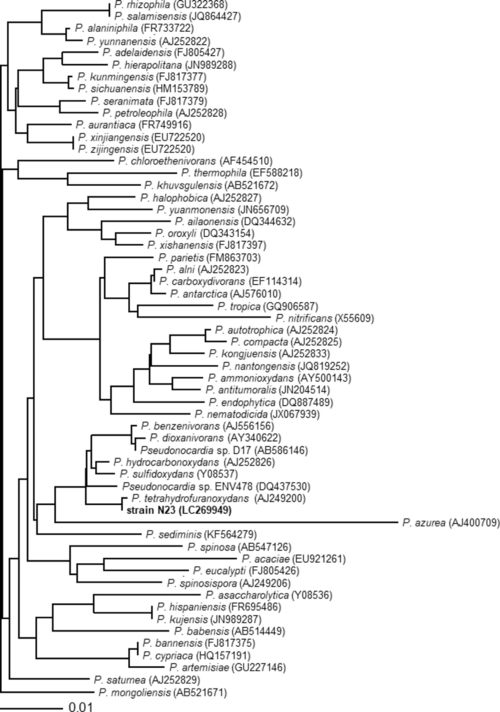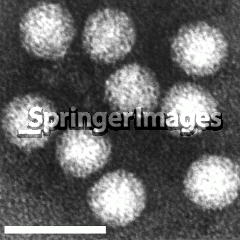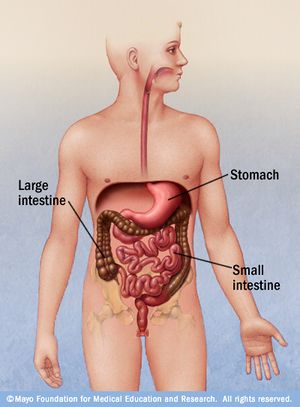Aichi virus
A Viral Biorealm page on the family Aichi virus

.
Baltimore Classification
The Aichi Virus is a (+) ssRNA [1]. NCBI
Higher order categories
Viruses; ssRNA viruses; ssRNA positive-strand viruses, no DNA stage; Picornavirales; Picornaviridae; Kobuvirus; Aichi Virus [2]
Description and Significance
The Aichi Virus is a member of the Kobuvirus genus in the Picornaviridae family[1]. It is a positive sense, single-stranded RNA virus [1]. The Aichi Virus appears to morphologically resemble astroviruses when examined by electron microscopy [3]. The virus was first isolated from an individual with a non-bacterial oyster associated gastroenteritis [4]. The virus is a known cause of gastroenteritis in humans [9]. It is the only virus in the Kobuvirus genus that has been found in humans [5]. .

Genome Structure
The Aichi Virus is a positive sense single stranded RNA virus with a genome of 8,280 nt and a poly (A) tail, which helps with the stability and decreases degradation of the RNA molecule [6]]. It has a 59% G+C content, which is very high for Picornaviridae [9]. It has a large opening reading frame at 7,302 nt, that translates for a potential polyprotein precursor of 2,433 amino acids [1]. The virus also can be divided into 2 genotypes, A and B, with around 90% sequence homology [1]. The stem-loop at the 5' end of the Aichi Virus genome has been found to be an element involved in both viral RNA replication and production of infectious virus particles [7].
Virion Structure
The structure of the virus is noted to be a spherical shape that resembles an astrovirus when looked at underneath an electron microscopy [3].
Reproductive Cycle in a Host Cell
The process of reproduction for the Aichi Virus is unusual. The virus goes through the lytic reproduction host receptors help the entry of the virus into the cell by a process of endocytosis [8]. The capsid undergoes a change and creates an opening within the host’s endosomal membrane [8]. At this point, the viral genomic RNA permeates through the host cell’s cytoplasm [8]. The protein VPg, is then taken out of the viral RNA and translated into a polyprotein, a large protein that can be cleaved into several minor proteins with diverse biological roles [10]. After this process ensues, replication occurs in “vial factories” from the membrane vesicles resulting from the ER. A double stranded RNA genome is then made from the genomic ssRNA (+). Similarly, a dsRNA genome is then transcribed by providing mRNA genome. This genomic RNA is thought to be put into assembled procapsids, which is a protein shell that does not have a viral genome [11].
The virus’s L protein is needed for viral RNA replication. There has been ongoing research about the significance of the L protein, which is important for viral RNA replication and excapsidation within virus replication. This is a unique aspect of the Aichi Virus compared to other Picornoviruses[7].

Viral Ecology & Pathology
There is not much known about the epidemiology as of May 2013. However, the Aichi Virus was first isolated from a case of an oyster related non-bacterial gastroenteritis in Japan [9]. This was the first isolation, but the virus was soon isolated in Japanese travelers in Southeast Asia, fecal specimens of children with diarrhea in several countries like: Brazil, France, Germany, and Tunisia [9]. An infection caused by the Aichi Virus can result in Gastroenteritis (the stomach flu) [9]. The virus is found to be mostly food borne. Symptoms include nausea and vomiting among others [12]. No information on virulence factors were found as of May 2013.
References
[1] Yang S, Zhang W, Shen Q, Yang Z, Zhu J, Cui L, et al. Aichi Virus strains in children with gastroenteritis, China [letter]. Emerg Infect Dis [serial on the Internet]. 2009 Oct [12 Feb 2013]. doi: 10.3201/eid1510.090522
[2] Aichi Virus human/hun298/2000/hun. (n.d.). Retrieved from http://www.ncbi.nlm.nih.gov/Taxonomy/Browser/wwwtax.cgi?mode=Info&id=571505&lvl=3&lin=f&keep=1&srchmode=1&unlock
[3] Vasickova, P. (2005). Viruses as a cause of foodborne diseases: a review of theliterature. Vet.Med.-Czech, 50(3), 89-104. http://www.vri.cz/docs/vetmed/50-3-89.pdf
[4] http://www.ebi.ac.uk/2can/genomes/viruses/Aichi_virus.html
[5] "Aichivirus A." Aichivirus A. N.p., n.d. Web. 03 May 2013. Retrieved from: http://www.picornaviridae.com/kobuvirus/aichivirus_a/aichivirus_a.htm
[6] Han, X. (2011).Sequence analysis reveals mosaic genome of Aichi .virus. Virol J. 2011; 8: 390. doi:10.1186/1743-422X-8 390 : http://www.ncbi.nlm.nih.gov/pmc/articles/PMC3168422/?tool=pmcentrez&rendertype=abstract [7] Sasaki, J. (2001). Construction of an infectious cdna clone of Aichi Virus (a new mem ber of the family picornaviridae) and mutational analysis of a stem-loop structure at the 5' end of the genome. J Virol,75(17), 8021-30. , doi: 10.1128/JVI.75.17.8021-8030.2001
[8] Viralzone:kobuvirus. (n.d.). Retrieved from: http://viralzone.expasy.org/viralzone/all_by_species/652.html
[9] Yamashita, T. (1998). Complete nucleotide sequence and genetic organization of Aichi Virus, a distinct member of the picornaviridae associated with acute gastroenteritis in humans. JVirol, 72(10).
[10] "Polyprotein." Merriam-Webster. Merriam-Webster, n.d. Web. 03 May 2013.Retrieved from: http://www.merriam-webster.com/medical/polyprotein
[11] "Procapsids." Medical Dictionary. N.p., n.d. Web. 03 May 2013.Retrieved from: http://medical-dictionary.thefreedictionary.com/procapsid
[12] Mayo Clinic. Mayo Foundation for Medical Education and Research, n.d. Web. 03 May 2013. Retrieved from: http://www.mayoclinic.com/health/viral-gastroenteritis/DS00085
